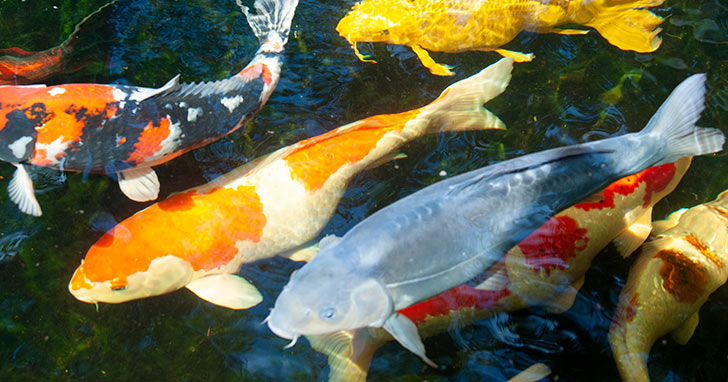How to Prevent Spring Kill

After a long cold winter, nothing is more exciting for a pond owner than the arrival of spring. However, for pond enthusiasts with koi, goldfish, or other pond fish, spring can mean unexpected challenges. In early spring, life that was once dormant becomes active. This awakening includes fish as well as bacteria and other microorganisms. If conditions are right, microorganisms can quickly multiply and create conditions that are stressful to fish. If pond conditions are left unchecked, eventual fish loss due to "spring kill" may occur. What is "spring kill?" The term "spring kill" commonly refers to seasonal fish loss due to a series of related water quality issues. It is generally caused by dangerous, oxygen-poor conditions. A low-oxygen environment is not only stressful to fish but also allows certain harmful microorganisms to thrive. Unseasonably warm spring days can give microorganisms an unfair advantage. It provides the energy that they need to actively metabolize and reproduce. In contrast, these short periods of warm days have minimal effect in raising the overall water temperature fish rely on to boost their metabolism and immune system. In this weakened state, fish are vulnerable to any opportunistic organism. When to begin pond spring cleaning Since temperatures vary wildly throughout the United States, there is no set time to begin spring cleaning of your pond – or koi pond’s - spring cleaning. A better indicator is whether or not there is still ice on the surface water. Although it may be tempting to speed up the process by moving the ice yourself, ice is really an indicator that your pond is still in winter mode. Once ice has thawed and the water temperature in your pond begins to rise, your fish will become slightly more active. The benefit to installing a pond aerator Installing a pond aerator is the easiest way to prevent spring fish loss. The added aeration prevents oxygen depletion and creates a healthy aquatic environment. Place the diffuser (bubbler) near the surface, so it will not stir up any debris, harmful gasses, or aggressively churn the water. When water temperature reaches 50-55° F consistently, you can begin aerating your pond. Since colder water holds more dissolved oxygen than warm water your pond stands to lose dissolved oxygen that the water held when cooler. We want to be sure aeration does not begin when the water is too cold as aeration can cool the water, bringing the body core temperature of fish too low. Do not remove or turn off heaters until the temperature benchmark mentioned above is reached. Water Quality Spring start-up should also include measuring the pH in your pond to ensure it matches the optimal levels for the fish in your pond. Checking pH balance will tell you if ammonia, nitrate, or salt imbalances need to be addressed. Once ponds come out of hibernation so you should check that your filtration equipment is in working order and reconnect pumps and filters that perform this essential function. Cleaning your pond contributes to water quality. Do not rush this step. Be sure your fish have come out of their winter hibernation, as their immune systems are still low from undergoing winter. Small amounts of sludge can provide a beneficial bacteria but be sure to remove any smelly or black decomposed matter on the bottom of your pond. Remember that in order to have healthy fish you must have healthy water. Feeding Your Fish Feeding your fish too early into the spring season or overfeeding are two contributors to spring kill. When fish show increased signs of activity, spring feeding can begin. You can find high protein options that are formulated for cooler temperatures that are easy to digest. Easy digestion helps reduce stress on diminished fish metabolism and the pond’s ammonia-processing capacity. For koi fish, you can start feeding Tetra Pond Spring & Fall Diet for Koi when water temperatures are below 50°F and above 39°F. Food that floats on the water is preferred to sinking pellets. Plants If you are considering adding or increasing the number of plants to your pond, spring is an excellent time to do so, once the water temperature reaches ideal conditions for water lilies or the other plants you select. In Conclusion Once your spring maintenance has been completed, you can enjoy another rewarding season of pond keeping and the enjoyment it brings. Related Information |
|
|




